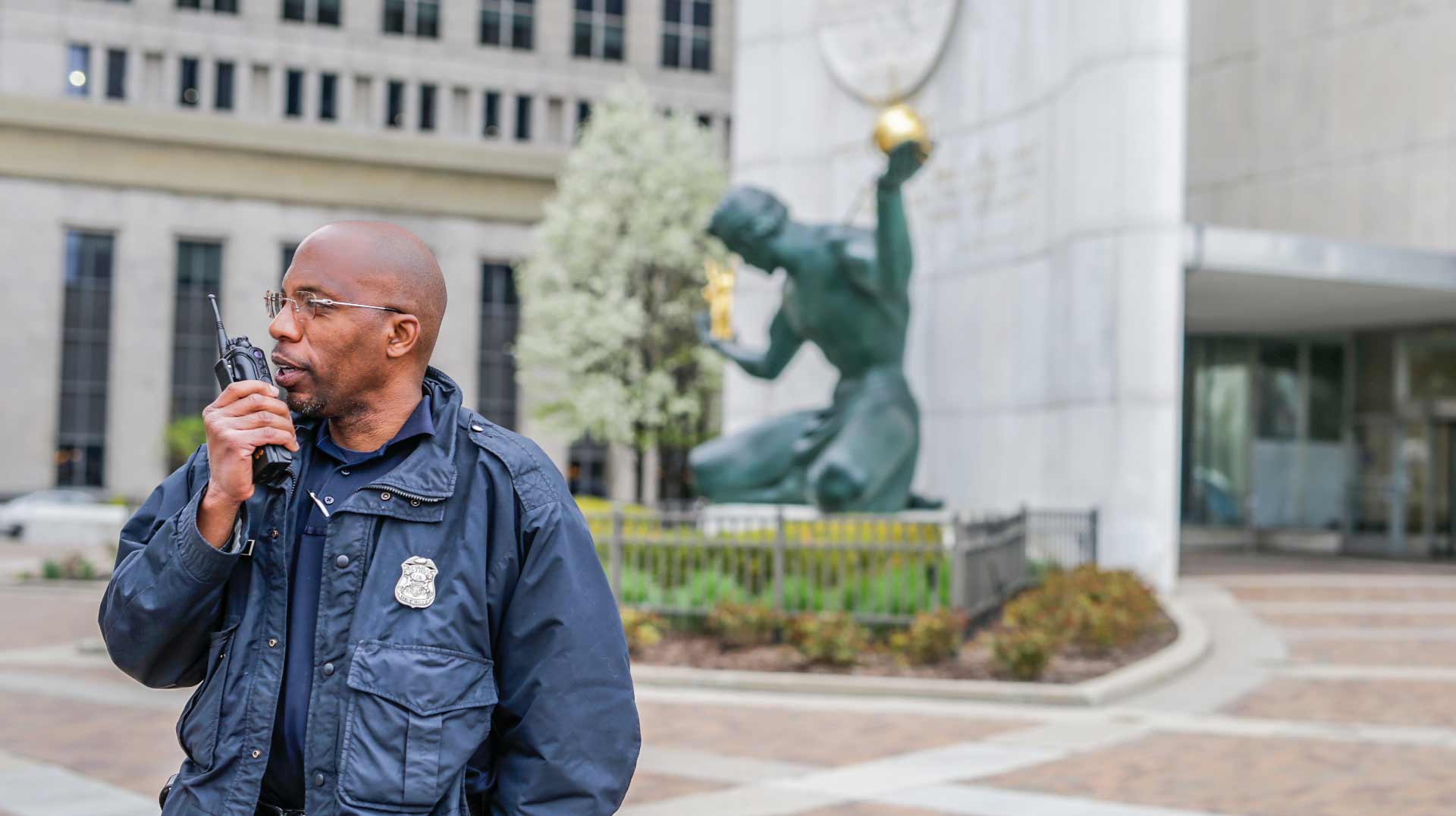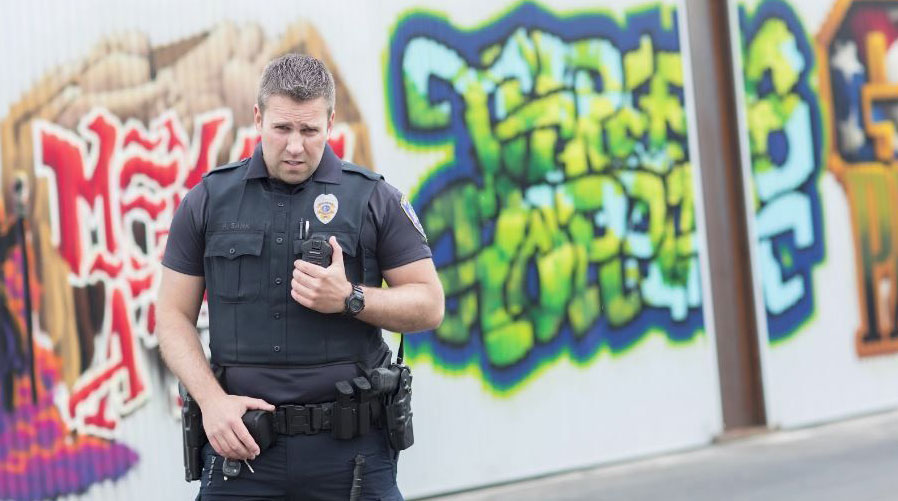Imagine having a security guard that never sleeps, never needs a break, and never gets distracted. Critical decisions in public safety often have to be made with incomplete and uncertain information under varying degrees of stress. Life and death hang in the balance as a consequence of many of these decisions. We live in a connected world that makes access to an ocean of data easy, but finding the islands of information and knowledge increasingly difficult.
At Motorola Solutions, we believe AI is becoming the new user interface and the science of human-computer interaction is rapidly evolving to account for this new reality. AI in its various forms, has the promise of being one among a small set of effective navigators that can help decision makers focus on what is relevant to their jobs in the moments that matter, eventually helping orchestrate complex workflows. AI-powered technology also offers objectivity and can be used as a failsafe to provide a second point of view to offset or counter human error, which may be introduced by factors such as fatigue, inexperience, bias, attention deficit or emotion. These requirements in public safety may be better understood as “assistive” AI. Like the name suggests, assistive AI does not execute commands independently. Instead, it assists first responders do their jobs quickly and efficiently as they receive and process data day in and day out. It is an assistive technology that is supercharging efficiency and facilitating decision support for public safety agencies, leading to safer environments, safer individuals and safer outcomes.
Motorola Solutions believes that purposeful application of AI that considers the cognitive state of the users, the performance characteristics of the AI, and the gravity of the decisions that the interactions enable is critical to responsibly assisting humans in making the best decisions under stress. While AI has made inroads in public-safety for more than a decade, we expect it to take a much larger role across various functions in the coming years. The area where we believe we’ll see the greatest strides are in thoughtfully applying machine learning to our workflow-focused applications.
Workflow-Focused Applications: Focus on What Matters Most
When a situation arises that involves public safety, a timely, efficient, and appropriate response is important, and what the public expects, every time. That is why we champion workflow automation to enable accelerated outcomes, which eliminates time-consuming manual processes, automates operations and streamlines workflows. We identify authorized and specific areas in the workflow where AI can deliver improvements, enabling users to accomplish the same tasks faster and more successfully.
While it may sound basic, workflows designed to automatically follow a set of rules or execute a predetermined sequence of operations based on a given input help public safety agencies respond to every incident more quickly, and free officers up to focus on the more complex decisions and activities that only a human can navigate. The future of this user experience is not just coordinating manual workflows, as we are also focusing on interaction with automated workflows to enable quick action. Today, AI breakthroughs in surpassing human ability in certain activities make headlines, but our users and needs require a very thoughtful approach to the application of this technology. The capacity to use AI to great effect for perceptual tasks has been unprecedented – bringing scale and accuracy to understanding of images, video, audio and text. A specific form of machine learning(ML) technology – deep learning, introduces an approach to tackle these challenges because they’ve been specifically modeled after the human brain. However, as described above this still falls short of what humans are capable of and requires a careful approach to designing workflow-centric experiences to be effective in mission critical situations like the ones our customers face on a daily basis. The key ingredient that our customers add is the ability to reason or discern what is relevant for a given situation which in turn creates a feedback loop that improves the underlying AI-driven capabilities.
With this north star in mind, we combine our AI expertise with human-centered design that focuses on learning about our users, their goals, and their challenges via our platform that makes enforcing compliance policies easier, manages policy-driven access to data, and enables secure sharing across users and applications.. Through the power of AI, Motorola Solutions offers next-generation video analytics and audio analytics capabilities that help users find what they are looking for faster, improve situational awareness and accelerate response times. With self-learning systems that can accurately recognize unusual motion or objects of interest, public safety virtual assistants that officers can ask to run database checks and live transcription of 9-1-1 calls to reduce cognitive load and telecommunicator burnout, technology has never been more integral to the success of public safety. Detect, verify and act on critical events proactively and get the information you need, fast. The more our users (humans) interact with our AI and workflows, and establish trust — this new way of working allows them to spend their precious time on things that matter like responders on the street and connecting with the community.
Responsibility and Trust: We Take Your Data Seriously
The smarter and more integrated AI applications are, the more worries public safety agencies and their communities may have about privacy, security and data ownership. Modern AI even has the ability to express uncertainty or even confusion. So human users must be able to understand the limits of the available data and account for such results. At Motorola Solutions, we strive to provide our customers with accountability and security that’s built into our products and services. In addition, we adhere to key privacy principles and promote ethical data management to comply with the most stringent legal and regulatory requirements. We thoughtfully design the specific interactions where users make AI-assisted decisions as a part of their workflow, ensuring that information presented is meaningful, understandable, and preserves user control.
Motorola Solutions is dedicated to keeping our communities safe. We achieve this through innovative, thoughtfully designed technologies that communicate behind the scenes, getting ahead of potential issues. Our systems are engineered to integrate AI-powered technology, making our response times focused and faster, averting disasters before they escalate and preserving public safety. The technology we create – and the work we do – enables people everywhere to be their best in the moments that matter the most to them.




